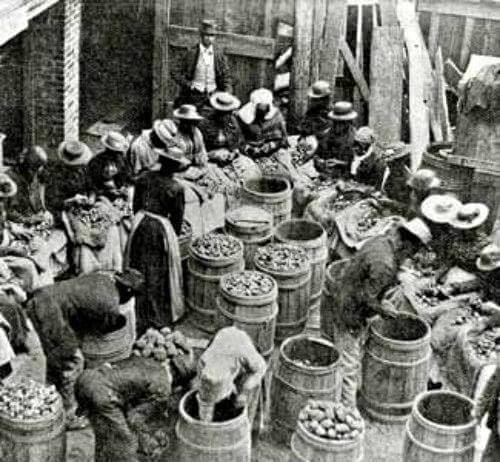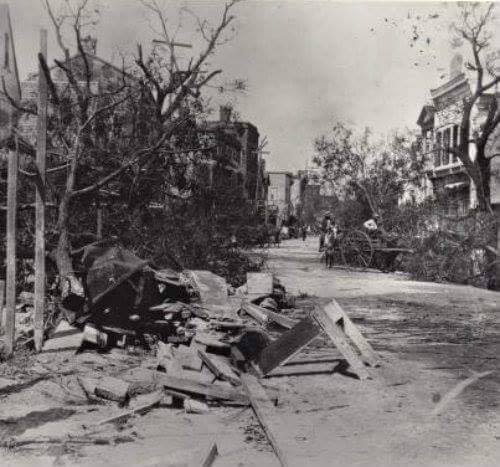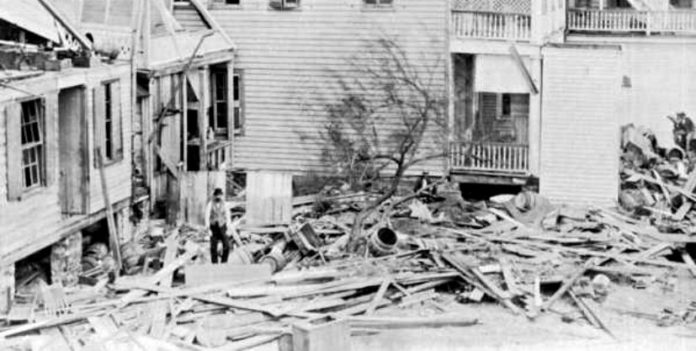Beaufort has a long history, and part of our long history are bad storms and hurricanes that threaten our coast every year. Hurricane Gracie, and more recently both Irma and Matthew are still fresh in the minds of locals.
But, there was one storm that outdid them all.
On August, 27th back in 1893 a major hurricane known as the “Sea Island Hurricane” struck Beaufort and the barrier islands here in the Lowcountry. The hurricane devastated the Beaufort area, with most of the damage coming to Lady’s Island and St. Helena Island.
Over 2,000 people were killed, mostly by drowning, and over 20,000 were left homeless as nearly every building along the barrier islands was damaged beyond repair.
After the disaster, relief effort centered in Beaufort was run by Clara Barton and the American Red Cross; the young organization’s first-ever effort at providing hurricane relief.

The Storm
Modern analysis of historical records has allowed the history of this storm to be pieced together, although the analysis is only an estimate since few accurate meteorological records were taken.
On August 15, 1893, a tropical storm formed in the Atlantic and became a hurricane on the 19th. The hurricane continued to strengthen, attaining Category 3 status on August 22nd while located northeast of the Lesser Antilles.
It is believed that the first effects of the storm were beginning to be felt in the Sea Islands area, with the winds steadily increasing during the night of the 25th, after the storm left the Bahamas. Some of the inhabitants anticipated the storm and left the islands as quickly as possible.
The hurricane moved parallel to the coast for about one hundred miles before making landfall near Savannah, Georgia on August 27th.
Reports from the time say that wind during landfall was around 120 mph, making it a category 3 storm. Pressure in Savannah was measured at 960 mbar but modern estimates put the pressure around 954 mbar. This would have made the hurricane most likely stronger than a Category 3 storm. The storm likely intensified to a Category 4, or 5, but there are no reports of this occurring.
The hurricane packed a heavy storm surge of 16 ft, according to Clara Barton’s reports, although the modern model calculates that some areas may have been inundated up to 30 feet, which caused great destruction along the coastline in Georgia and South Carolina. The death toll put it on-par with 2005’s Hurricane Katrina as one of the deadliest hurricanes in U.S. history.

St. Helena Island was hit particularly hard because many of the structures were not elevated higher than 2 feet. Therefore, they were covered by the first waves that came ashore in the surge.
After the Red Cross arrived on October 1st, a warehouse of clothing and food was put together in Beaufort, and relief efforts were staged from town. During the enormous 10-month relief campaign, success was declared with the Sea Islands population living in decent houses and again producing their own food.
Damages from the storm totaled to at least $1 million; or around at least $26 million in 2019 dollars.










